Beep! Boop! Vroom! Whirrr!
The robots are powered up and ready for you and your team to get your minds in sync.
(Not the “bye-bye-bye” kind, though that would be awesome.)
This quirky, silly game will have you scratching your head and laughing your way around the board as you program your new robot-friends to complete their various tasks.
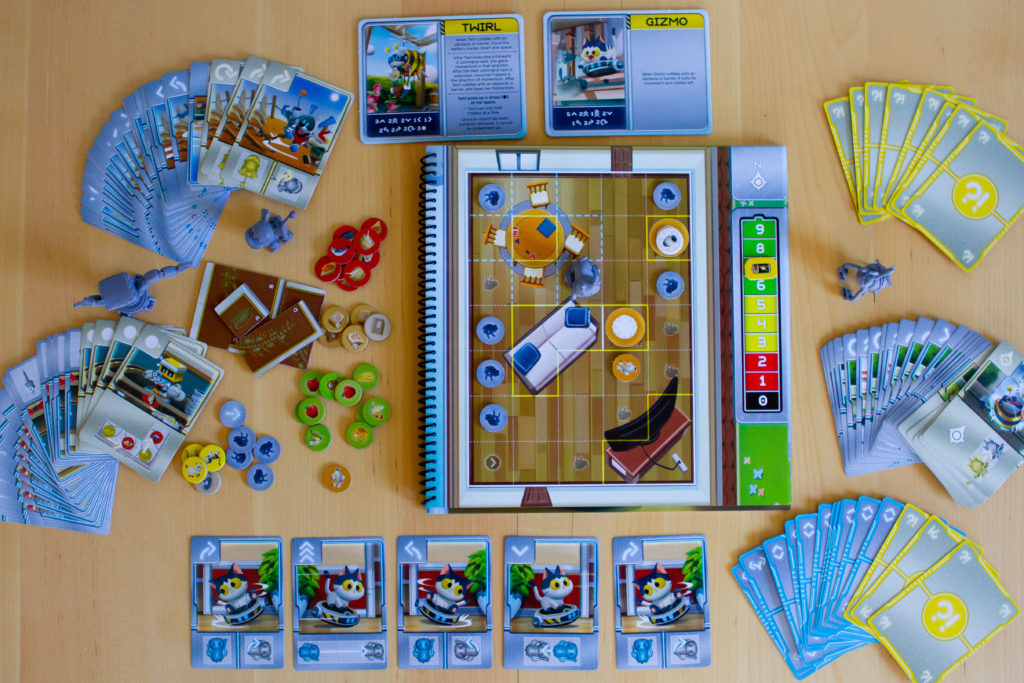
*this post contains affiliate links*
What is Quirky Circuits?
Quirky Circuits is a cooperative game for 2-4 players where you will be working together to program robots to complete a variety of different objectives.
How do you play?
Players will choose a scenario from the book and follow the set up guide found on the left side of the page, grabbing the robot and needed tokens for their selected scenario.
Each robot has their own deck of cards. These cards are dealt out with hand size determined by player count. The rest of the cards form a face down deck.
Players will look at their hands and then, when everyone is ready, begin to program the robot.
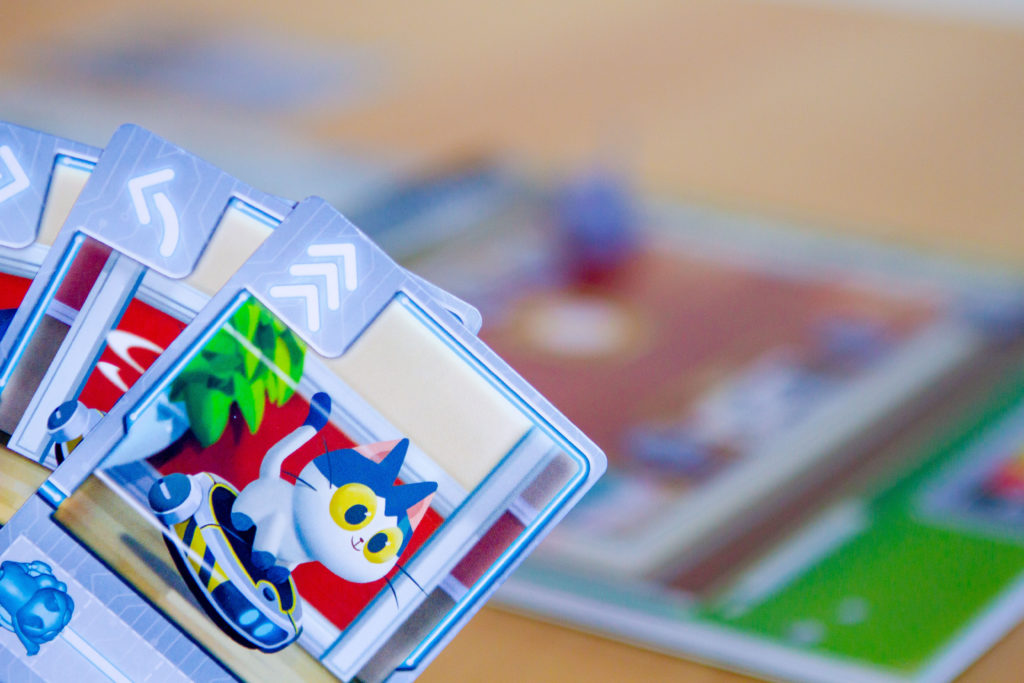
During programming, players collectively play their command cards face down into a queue. Players can play cards in any order, including multiple cards in a row, and do not follow any type of turn order structure. Players are not allowed to communicate what they are playing and once played, the cards cannot be rearranged. Everyone must contribute at least one card to the queue.
Once everyone is done playing cards to the queue, the cards are revealed and resolved. Flip the cards over in the order they were added to the queue and move the robot as it says.
Once all the cards in the queue have been resolved, they are collected and shuffled and placed on the bottom of the command deck. The battery of the robot is moved down one space, and players draw back up to their full hand size.
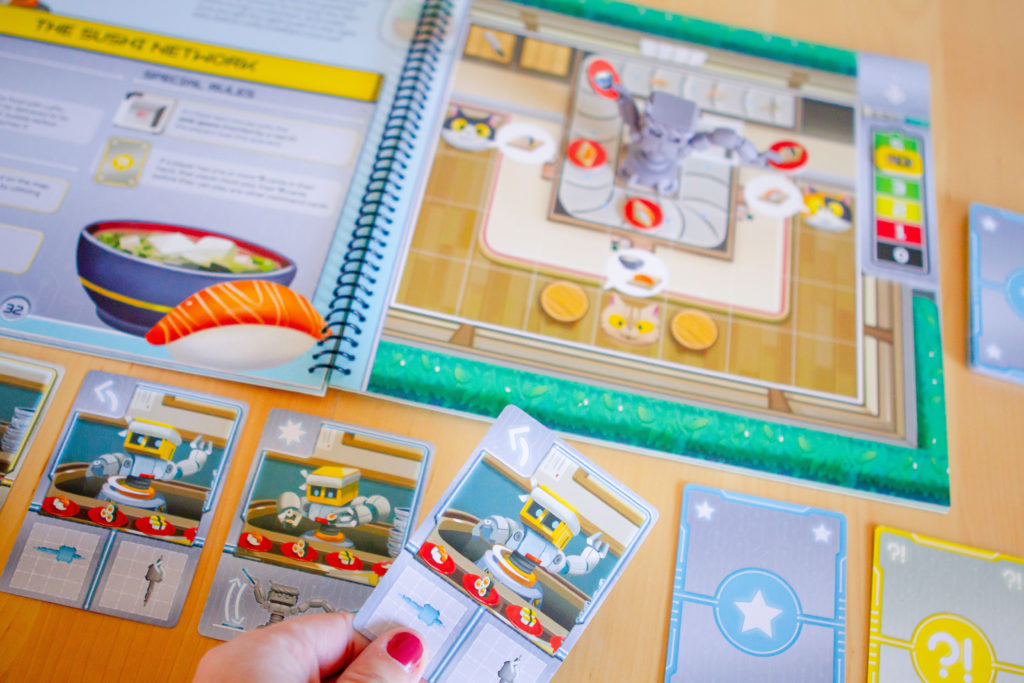
Players win immediately when they complete the scenario’s goal.
Players lose immediately is the battery marker reaches 0 and they have not completed the scenario’s goal.
What do we think?
Quirky Circuits is an interesting game in that, due to the art and design, it looks completely like a kids game, but is surprisingly tricky players of all ages.
The mechanics of the game are very simple and can be taught in just a couple minutes, but the non-verbal communication required to successfully guide the robot characters to their destinations is very difficult. This reminds me a bit of The Mind, where players are attempting to play cards in sequential order.
Quirky Circuits is perhaps even trickier as everyone must work together to program the movements of these robots, not only silently figuring out the path the bot should take, but trying to determine the type of movement card a teammate played. Did they go forward one, two, or more spaces? Backward? Should I turn now? Are we here or somewhere else?
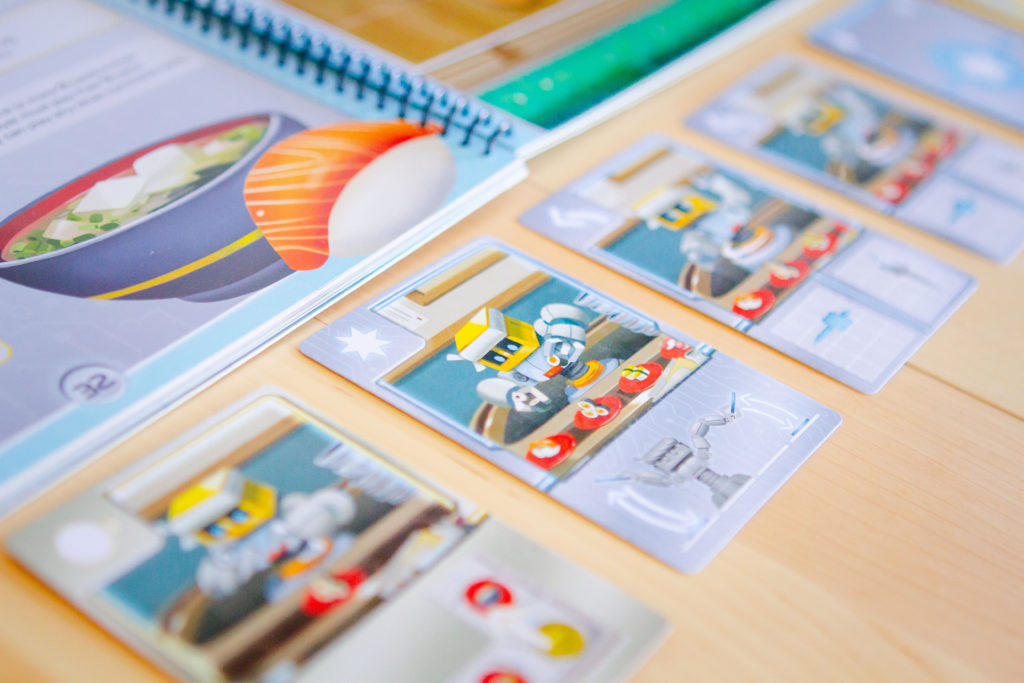
Inevitably players will program the robot into areas of the board where they shouldn’t be and must then figure out how to get out of that area and back to the task at hand.
The story board progresses in difficulty very well. You start off the game with Gizmo, the robot cat vacuum and with each turn of the scenario booklet, your tasks get a little more difficult. As you progress, the robots and their movements become more complex, adding new challenges for everyone to navigate.
Theme
I just love the theme here! These little robo-friends make complete sense when working through an action selection game. I’m not going to lie, the Roomba cat Gizmo cracks me up. Every time we’d get so close to vacuuming up a dust bunny only to have a card played and juuuust miss it and turn the other way. Pretty much how every robot vacuum works!

Components
The components are pretty nice. There are four robo-friend figurines inside which each have their own special movement rules that are detailed on thick cardboard tiles. Everything is really well made though the standee for the bee is very thin and fragile. Ours came broken actually. The bee doesn’t need to be on the standee to “fly” as its just for aesthetics, but it is still a bummer.
Many of the robot characters are required to pick things up, and the figures themselves allow for just that making for very cute visuals. The dog holding the discs in its mouth is ridiculously cute.
While the robot figures are fantastic, what I love the most is the scenario book! Oh my goodness, I am so glad this is how the game works rather than having multiple cardboard tiles you would have to put together, flip over, and arrange in specific ways. When you’ve beaten a scenario, just turn the page, follow the set up instructions, and you’re good to go! Absolutely a breeze!
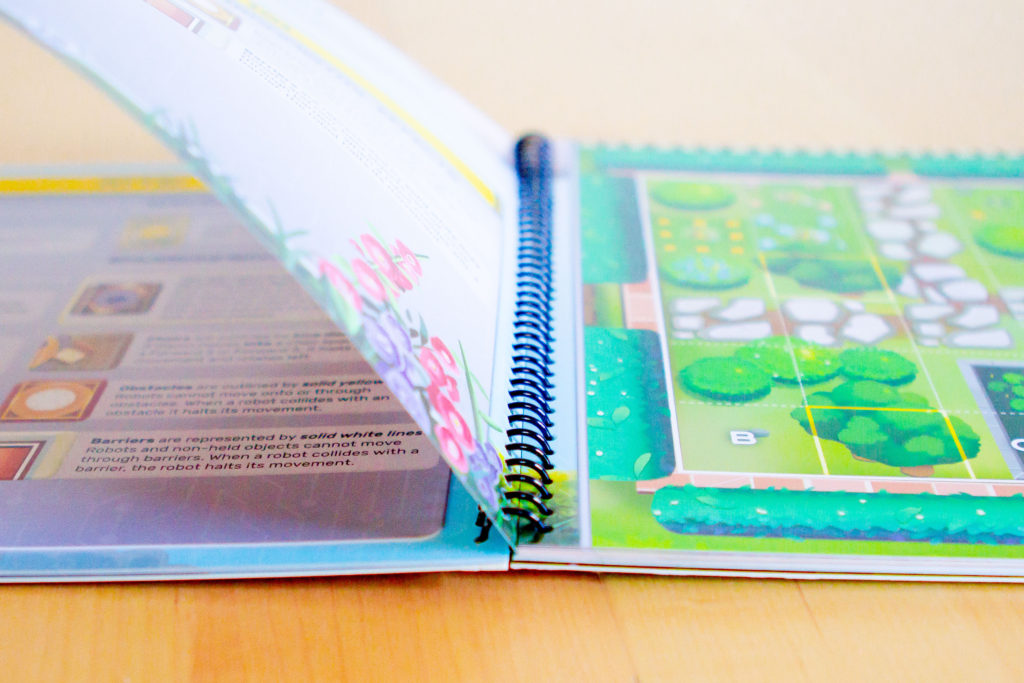
Parents! Just a little heads up…
As I mentioned above, this game is targeted towards kids through its artwork, but it might not be best suited for every kid. If your child has a hard time making mistakes, this might be a struggle for them.
Our daughter Alice is very competitive and always wants to do her best. Due to the nature of the game, you don’t know exactly what card you should play all the time. You have to guess based on the types of cards everyone else has played what you should play.
This is can be very difficult for children to try and work through. When we played together, she got really emotional each time she played a card wrong or just felt lost and unsure what to do. While she always wants to do well, this strong of a response was very unlike her.

I think the cooperative nature of the game, combined with the very difficult decision of what and when to play your cards, trying to guess what everyone else did or didn’t do, puts a lot of pressure on younger players. Nobody wants to let the team down.
This game is far from easy. We played with adults who similarly struggled. You have to really be able to watch what others are playing and make judgements on what you should do in response even though you won’t know with 100% certainty if you made the right call until its too late.
I think it’s important to know this going into it. If you are going to be playing with younger kids, you can prepare not only them but also yourself as you might need a little extra patience with this one.
(If you are playing with younger kids, I highly recommend playing the Practice Mode. This mode allows players to play their cards into the queue face up. This is still a challenge for younger players as they must be able to visualize the code and how it will move the robot.)
It was fun to see just how different playing Quirky Circuits with people whom you know how they think compared with those you don’t. The latter when about as well as you’d expect. Hilarious but a disaster.
I experienced the former when playing with my siblings. We were able to cruise through scenarios because we just mentally clicked with each other. (This will be shocking news to our mother.)
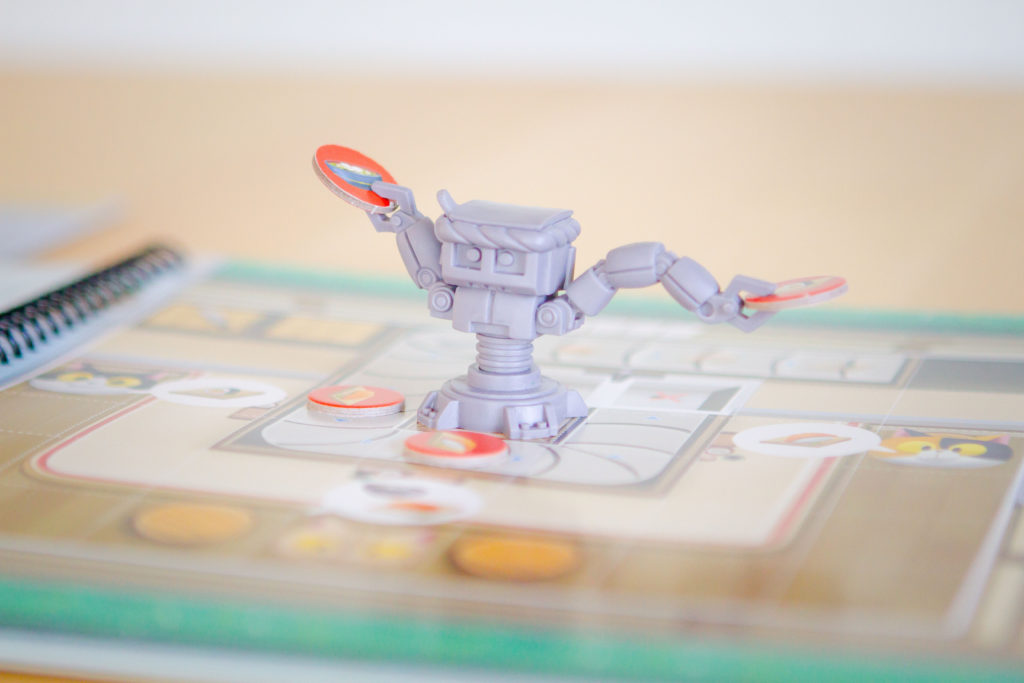
Summary
Quirky Circuits is highly addicting! We love it! Don’t be fooled by it’s adorable art, this is anything but easy and will have you and your teammates working hard to read each others’ minds to program your cards just right to meet your goal.
The scenario book keeps the game contained in a smart package that is quickly set up for players to get right to playing. I love how the game progresses in difficulty gradually with each flip of the book, offering new challenges and obstacles for you and your team to work through.
Not only does figuring out when to play your cards offer a challenge, but finding a way to contribute when you don’t have the best programming options brings a unique twist to navigate.
The non-verbal communication that makes the game difficult might turn off some players or prove too difficult for children. This will not be well suited for personality types that get easily frustrated or shut down when they don’t have a lot of information to help inform their decisions.
Programming the robots by mind melding with your teammates is incredibly satisfying when it works! If you love this type of challenge brought about by these non-verbal limitations, or if you are a fan of The Mind, you will most likely love the challenges and silly moments found in Quirky Circuits.
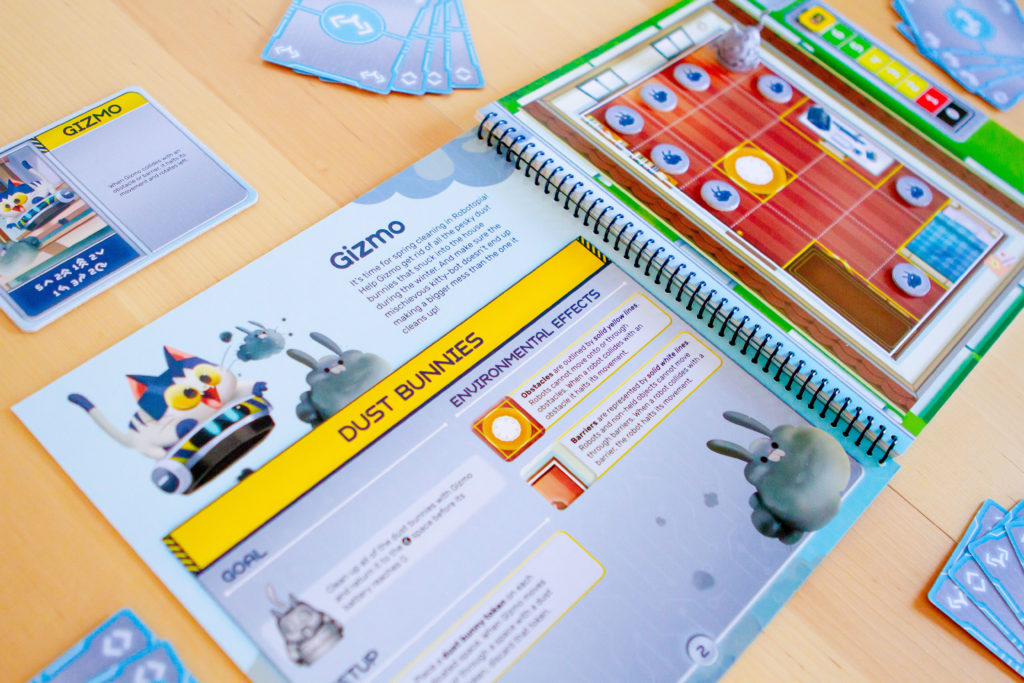
A special thank you to Asmodee North America for sending us a copy of Quirky Circuits for review.
As always, our opinions are our own and cannot be reprogrammed otherwise.
Game Info:
Title: Quirky Circuits
Ages: 8+ 2-4 players
Designer: Nikki Valens
Artist: Danalyn Reyes
Publisher: Plaid Hat Games
Published: 2019
If you liked this post you may also like:
2019 Board Game Gift Guide
6 Games to Try After CodeNames
Honga Review


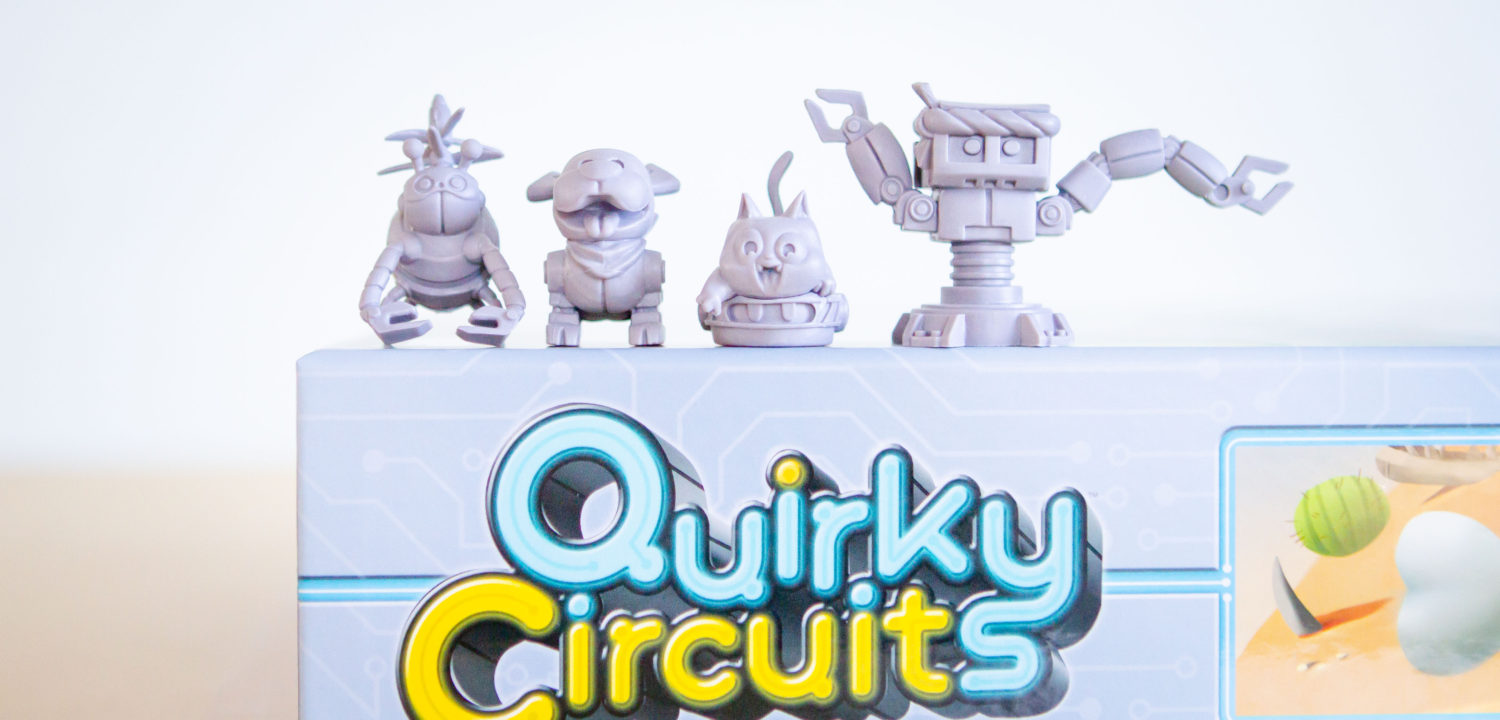
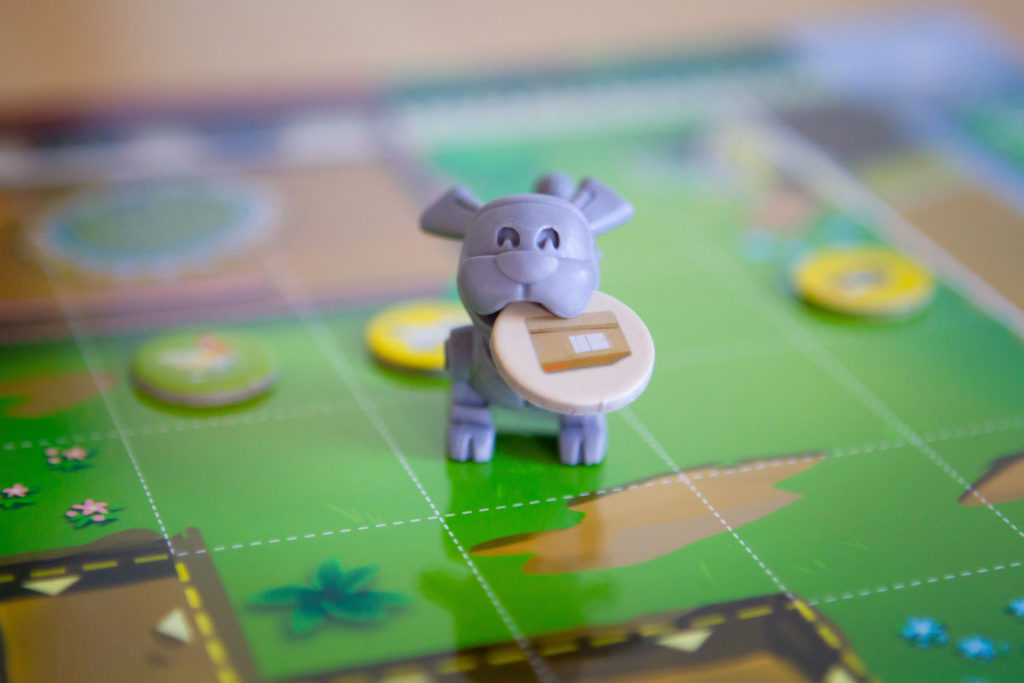

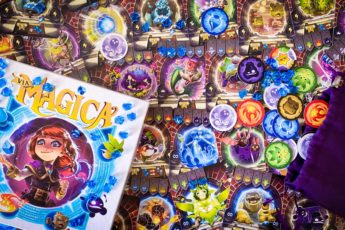
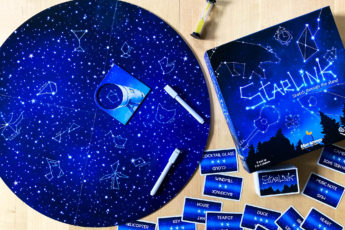






Leave a Comment